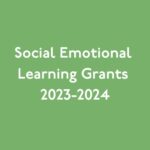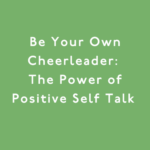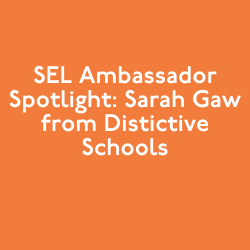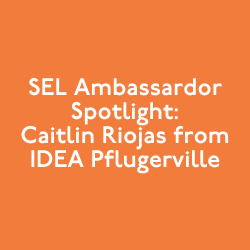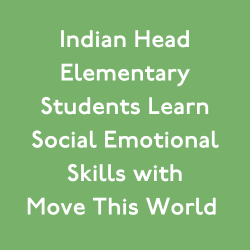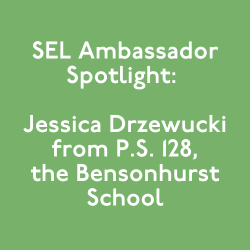Kai-Yao To is a kindergarten teacher at Shu Ren International School. After working in advertising for ten years, Ms. To was inspired by her daughter’s kindergarten teacher to make a career change. She began by volunteering in her classroom and became a full time kindergarten teacher ten years ago. She strives to engage her students in creative and fun activities each and everyday. We sat down with her to discuss her teaching career, her personal emotional management strategies and how SEL has impacted her students.
What was your favorite school subject growing up?
Growing up my favorite two subject were always art and science.
What inspired you to become a teacher?
Prior to becoming a teacher I worked for an advertising company as a graphic designer. I worked in advertising for 10 years. It was when my daughter was in kindergarten that I first became interested in becoming a teacher. I saw how difficult the profession can be and recognized the significant impact teachers have on students’ lives.
While my daughter was in kindergarten her school went through a budget cut and no longer had the money to fund an art program or pay an art teacher. I had always loved art and used my art skills daily as a graphic designer. One day, my daughter suggested to her teacher that I should come to their classroom to “do art” with everybody. Her teacher ended up reaching out to me and that’s really where my teaching career began.
I started out volunteering in that kindergarten classroom and set up art centers for my daughter and peers to participate in. My daughter’s teacher really helped guide me. I learned so much from her and she motivated me to pursue this career. I ended up working as an art teacher in after school programs and for a Saturday school program. I went on to get my teaching certification and started teaching kindergarten full time in 2006.
What do you enjoy most about being a teacher?
I love having the opportunity to be creative every single day. I really strive to create fun and engaging activities that my students will find exciting. I carefully adjust my pace and lessons to meet my students needs and always listen to their feedback and suggestions – they are incredibly honest and straightforward. That’s another aspect of this job that I truly enjoy – the ability to learn from my students.
Teaching is a job that involves a lot of time. You put in your time at school, often take work home and are constantly thinking about your students. The students appreciation makes all that time worth it. It’s important to me to make sure my students are successful both academically and personally.
What’s the best piece of advice you’ve been given?
One of my former art teachers told me: “There’s no right and wrong in art.”
Art should be something that allows you to express your thinking and ideas. Even from an early age, children have a mindset that there is always a right or wrong. For example, we read a book about rabbits and I had my students draw their own rabbit. Some students got frustrated when their rabbit didn’t look just like the book, even though I gave them permission to be as creative! It’s important to encourage children to be open minded – art is one way we can help do that.
How do you support your own emotional wellbeing and deal with stress?
I love drawing and cooking. I try to draw at least once a week. For me, drawing is a different type of meditation. I focus on the pencil strokes and small details of the drawing. I even use cooking as a form of meditation by concentrating on preparing the food, chopping, cutting, stirring, etc. If I do find myself in a stressful or challenging situation, I’ll use some mindful breathing techniques. These are so useful because you can use them at anyplace and anytime.
What challenges do you see your students facing, particularly socially and emotionally?
This is my tenth year teaching kindergarten and the main challenge I see has stayed the same. The children don’t know how to express themselves, their feelings and their thoughts. This can be especially problematic when they approach a conflict with another student. That lack of expression can lead to a physical conflict if they can’t use words to explain their feelings. Once they know how to express themselves in words, physical conflict naturally decreases.
What impact does social emotional learning have on your student’s ability to succeed?
Social emotional learning is so important. When a student is emotionally ready to approach their day they can perform better in all areas. A positive attitude and emotional wellbeing help students stay present and contribute to them truly enjoying learning. It’s also easier for them to overcome challenges, both academically and personally, if they have social and emotional skills developed.
How do you and your students feel about using Move This World?
I think the opening and closing day videos are great – they’re nice and short so they don’t take up any of our instructional time. The language is straightforward and easy for students to understand. They’re able to catch on quickly.
The students love it! They really enjoy the mindfulness exercise and the opportunity to get up move. It’s been very positive for them.
Have you seen any changes in students behavior, interactions or attitude?
My students are becoming better at expressing their feelings. They’ve started talking about how they’re feeling at the start of the day or at particular moments throughout. They’ve also started to think a little more deeply and start questioning why they feel a certain way or why their friends and classmates might feel a certain way. I’ve seen an increase in the students reaching out to help each other. Just the other week a student got frustrated and upset because a project we were working on was hard for them. The other students supported him, offered encouragement and helped him get his project finished. It’s great to see my students take the initiative to help one another.
Sign up for Move This World’s newsletter to stay up to date on social emotional learning.
Enter your email below!




